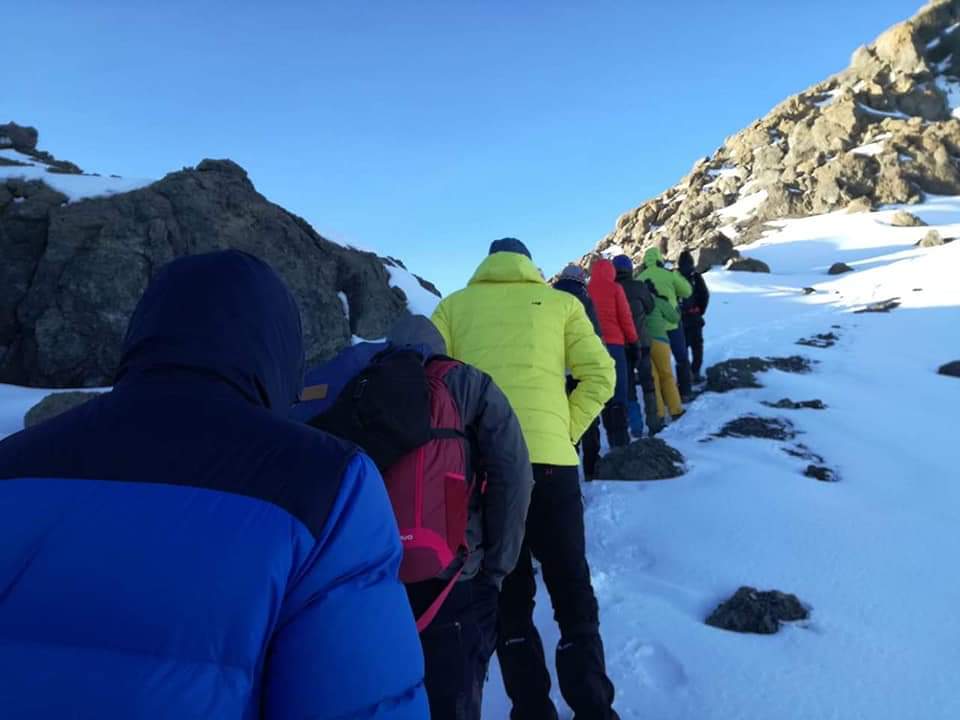How Difficulty is the Kilimanjaro Trek - How hard is it?
Expert travel insights and safari tips for your Tanzania adventure with Juhudi Expedition.

Kilimanjaro is not a
technical hike, and its a relatively achievable goal, even for beginners.
However, the challenges lie in dealing with high altitudes and the physical and
mental demands of the trek.
This iconic mountain,
standing at an awe-inspiring 5,895 meters, offers more than just a climb. Kili
presents a journey through diverse ecosystems, from misty rainforests to arid
alpine deserts, culminating in a snow-capped summit.
So, if you want to
know how hard it is to climb Kilimanjaro, read one as we fill you in on the
details.
You may be surprised
to learn that, provided you have a good base level of fitness, most days of the
Kilimanjaro trek are not actually that difficult. Kilimanjaro would be relatively
easy for someone who's done more technical summits like Elbrus and Aconcagua.
However, it is challenging for less experienced hikers and shouldn't be
attempted as a first summit. The difficulty of Kilimanjaro mostly depends on
how your body reacts to the altitude.
Most people are not
used to hiking at high altitude conditions and this heavily affects your
experience. The daily distances are manageable and you will be hiking at a very
slow pace to acclimatize.
The hardest part of
Kilimanjaro for most people is the final few hours to the summit.
There are a few
different factors that affect the difficulty of hiking Kilimanjaro.
The first factor you
want to consider when determining Kilimanjaro's difficulty is the route you
follow. There are several Kilimanjaro routes - each with its challenges that
determine how hard the climb can be.
- Machame: This route is quite
challenging and considered difficult and steep. Longer itineraries
increase your chance of reaching the summit. Scaling the Kilimanjaro Barranco Wall, a steep
rock face, adds to the exciting endurance test.
- Lemosho: This route is
considered moderately difficult. It is usually completed on longer
itineraries (seven or eight days), which helps for acclimatization. The
trail follows a varying elevation profile with lots of ups and downs.
This, combined with the distance covered, adds to the challenge.
- Rongai: Known as a secret trail, this route is less crowded and offers a steady ascent. However, the climb
across desolate scree slopes and the long final ascent make it
challenging. There is also less opportunity to trek high, sleep low.
- Marangu: Often considered easier in
terms of terrain and because you sleep in huts. However, this means the
route is typically done on shorter itineraries, which means less time for acclimatization.
Also, the final ascent is quite demanding.
Hydration Is Key
Staying hydrated is
paramount, especially given the challenging conditions and high altitude of
Mount Kilimanjaro.
Dehydration can lead
to numerous symptoms, including headaches, weariness, and even more severe
conditions like seizures or coma.
It can also exacerbate
symptoms of altitude sickness - making it even more crucial to maintain proper
hydration levels.
The body loses more
water than usual at high elevations due to factors like sweating and breathing.
So, its best to consume at least four liters of water daily when climbing.
Your Fitness
Preparation
Having a solid fitness
base will make your ascent up Africa's tallest mountain that much easier.
You don't need to be a
pro athlete to hike Kilimanjaro. But a reasonable fitness level is absolutely
essential for a successful climb.
In general, you should
be capable of walking six to seven hours a day, as this is the average duration
of daily trekking on most routes. Keep in mind that you will be walking with your
day pack on as well.
Training for
Kilimanjaro doesn't require rigorous gym sessions but does call for adequate
aerobic fitness. It may be best to train for about two months for the climb -
focusing on endurance and cardiovascular fitness.
Its also a great idea
to do some hikes carrying a loaded day pack so you can get used to having the
weight on your back.
Acclimatization and Altitude
Perhaps one of the
biggest challenges you will face when climbing Kilimanjaro is
acclimatizing to the high altitudes.
As you ascend, the air
gets thinner, oxygen levels get lower, and breathing gets harder increasing the
risk of altitude sickness
Also, consider taking
a pre-acclimatization climb to prepare your body for the altitude.
Acclimatization is
your body way of getting used to the lowered oxygen levels, and the key to a
successful climb is giving yourself enough time to acclimatize.
So, we always recommend choosing a route that offers ample time for acclimatization. For instance, routes like the Lemosho 8-Day offer more time to adjust than the shorter route.

